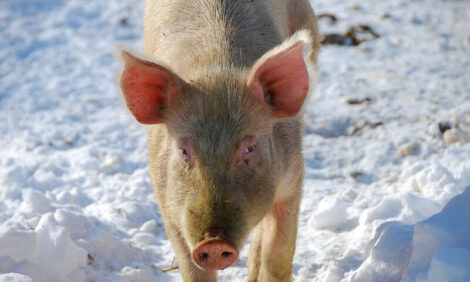



Nutriad releases 2017 Great Britain & Ireland 2017 Mycotoxin Survey
For many years multinational feed additives producer Nutriad has been analyzing crops across the world to determine mycotoxin contamination level, so it can better support local producers in their mycotoxin management strategies.
The 2017 Nutriad Mycotoxin Survey covered 51 wheat samples from across Great Britain and Ireland. All samples were collected directly from farms or animal feed production sites almost immediately after the harvest when the probability that some storage mycotoxins such as ochratoxin A (OTA) will have developed was low.
More than 350 analyses were conducted to test for the presence of the 7mycotoxins most frequently found in agricultural commodities intended for animal production. The survey provided insight into the incidences of aflatoxin B1 (AfB1), zearalenone (ZEN), deoxynivalenol (DON), T-2 toxin, HT-2 toxin, fumonisins (FB1 + FB2) and OTA. Typically, the levels of DON and ZEN in wheat tend to be lower in Northern England and Scotland; moderate in Western England, Wales and Ireland and highest in Southern and South-eastern England.
The results show that 74,5% of wheat samples were contaminated with DON and none of the samples contained AfB1, T-2 toxin, HT2-toxin nor FUM (Table 1). The average concentrations of all identified mycotoxins were medium while the highest concentration of DON found in one of the samples reached 1180 μg/kg. Although 35% of the samples were contaminated with ZEN, a mycotoxin affecting reproductive functions of all animal species, its average concentration was negligible at only 38 μg/kg. However, the maximum concentration of ZEN found in one of the samples was 164 μg/kg and this level may be significant for sows, boars and piglets. As expected, none of the samples were contaminated with OTA.
When comparing DON and ZEN contamination levels of wheat in the years 2014, 2015, 2016 and 2017, the contamination levels in 2017 are significantly higher than in the 3 previous years.
The Nutriad 2017 mycotoxin survey concluded that the year’s harvest of wheat in Great Britain and Ireland is of medium quality (>LOQ but below EU recommendation levels) in terms of mycotoxin contamination.
The quality of wheat is slightly worse than the previous year and significantly worse than in the years 2014 and 2015. Based on the results of this survey conducted immediately after the 2017 harvest, the 2017 wheat crop in Great Britain and Ireland should not automatically be considered safe for inclusion into finished feed rations for all animal species and a degree of vigilance is prudent.
Vigilance is always advisable in any case as cereals in animal feeds originate from many sources and some continental European cereals and South American soya harvested in 2017 have been shown to be contaminated with medium to high concentrations of mycotoxins. The last possible line of defense is the detoxification of mycotoxins in vivo. The addition of proven mycotoxin deactivators to animal feeds is a very common method to prevent mycotoxicosis and is an effective strategy to keep mycotoxin risk low under all conditions.
Nutriad delivers products and services to over 80 countries through a network of sales offices and distributors. These are supported by 4 application laboratories and 5 manufacturing facilities on 3 continents. Find out more at http://nutriad.com/








